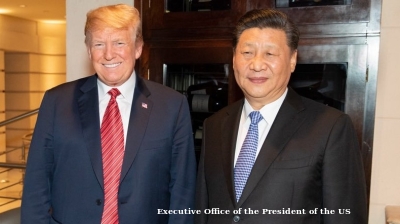Belarus' economic growth was higher than expected in the first half of this year. It topped 4.5%, almost twice the 2.8% forecast at the start of the year. The government is using the windfall to pay down external debt early and meet its major social and economic development targets, Belarus' Prime Minister Andrei Kobyakov said at a government meeting on August 2.
“In general, the first half results are good. All major social and economic development targets approved by the head of state are being met. State social guarantees to the population are fulfilled. The growth dynamics has been pretty good,” Kobyakov said, reported BelTA.
All regions have reported an increase in gross regional product and productivity, the prime minister said. Processing manufacturing expanded by 7.9%, construction by 7.5% and trade (wholesale and retail) by 7.8%. Agriculture and transport went up by 3.9% and 3.7%, respectively. Production of machinery and equipment surged by 19.2%, transport vehicles by 13.7%, woodworking products by 14.8%, and pharmaceutical products by 11.9%.
In addition, foreign trade remained balanced. A surplus from trade in merchandise and services came in at $310mn (in January-May) or 1.4% of GDP.
“The result is slightly better than last year. It is due to the growth of exports of goods and services, particularly to non-CIS countries. In addition to energy products, Belarus increased export of tractors, trucks, tires, steel products, furniture and woodworking products, paints and varnishes, linen fabrics, milk and other products. In January-May the exports of goods and services totalled $3bn ($2.4bn in trade in goods, $0.6 in service). Almost half of the growth of commodity exports came through the growth of physical volumes,” Kobyakov noted.
Low inflation together with other measures help reduce the cost of credit resources for the economy. The central bank cut the refinancing rate to 10% per annum in June. New loans for legal entities in rubles (except soft loans) were issued at under 11.3% per annum in June.
The head of government said that the currency, credit-deposit and financial markets remained stable. Confidence in the national currency has been gradually increasing and will improve further after the last mandatory surrender requirements on foreign currency earnings were removed in August.
And the government has already covered most of its refinancing needs on its external debt with Eurobond issues earlier this year. Belarus tapped the international debt market on February 21 for the first time this year with a new $600mn issue of a 12-year Eurobond with a 6.2% coupon following January's drop in the nation's foreign exchange reserves by $838mn, or 11.5% month-on-month, to $6.477bn.
However, the government may issue some ruble-denominated bonds on the Russian market to refinance ruble debt. Other than the placements in Russia, the Ministry of Finance said earlier this year that it doesn't have plans to issue more debt this year on the international markets and will use its trade surplus revenues to pay down sovereign debt. However, some 75% of the country’s external debt will have to be refinanced.
News

Trump and Xi to meet in Busan, South Korea
The meeting comes after weeks of uncertainty over whether the encounter would take place. A trade dispute flared earlier this month when Beijing expanded export curbs on rare‐earth minerals, prompting the US to threaten additional tariffs.

Russia will remain defiant against US sanctions pressure, Putin claims
The sanctions come at a time when Russia’s two largest energy buyers, China and India, have shown signs of reducing their oil imports from Russia.

Russia rules out seizing EU assets but warns of retaliation if confiscations proceed
Russia will not seize European Union assets currently operating within its borders, Russian Deputy Finance Minister Alexei Moiseev has said.





